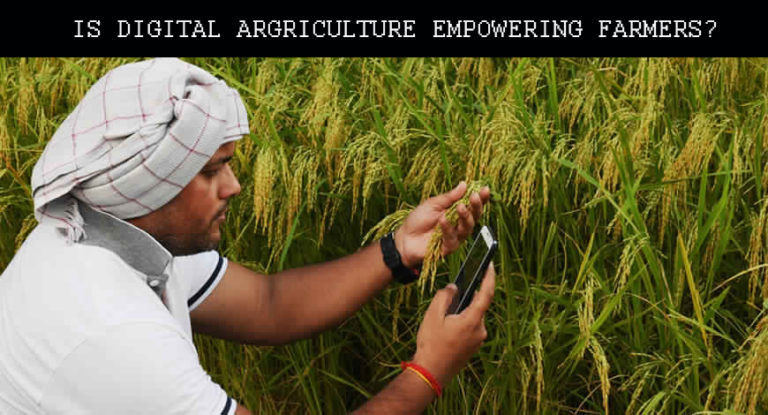Transformation Of Agriculture With Digitization In India!

Despite driving for Digital India, and been ranked 2nd in the world’s population, India still has tiny internet users. In 2017, it was found that only one-in-four used the Internet in the country. On July 1, 2015, Prime Minister Narendra Modi launched Digital India with an aim to create a digital infrastructure for empowering the rural communities by promoting digital literacy and enabling digital delivery of services.
Even today, more than 50 per cent of the population in Indian is still dependent on primary sector /agriculture as the main source of their income. In this era of globalization, and digitization, numerous technology and the techniques farmers used has been transformed. Even though digitization has empowered farmers to be more informed about government schemes and other policies but still there has also been an inefficient and harmful impact of digital India. In the name of the Internet, people are getting more inclined towards social networking site, YouTube, porn site and other irrelevant sites, which indirectly effecting study, relation, livelihood etc.
The report estimates 291 million urban mobile internet users and out of 918 million estimated population, there are only 187million rural internet users by June 2018. However, 50% of the maximum time spent on a smartphone are on social networking sites, video-streaming, browsers, andimage apps. The user habits of smartphone users estimate that users across the sections(entry level, average, and premium) devote more than 90 minutes per day on online actions and the premium division spends up to130 minutes per day whichclearly shows the inefficient utilization of the Internet.
Digital agriculture empowering farmers
Digital agriculture is already demonstrating strong potential in tackling the challenges of global food production and providing lessons in managing complicated processes at a scale that the technology industry can learn from. At the beginning of 2018, while smartphone sales plateaued a little, the recent rise of cost-effective phones with a 4G-enabled feature in India also plays a role in bringing more online users.
If we take a look through the scheme for farmers amalgamated with Digital India, you will see the Pradhan Mantri Fasal Bima Yojana, that encourages the farmers to use modernized machinery is leading to growth in productivity and the Soil Health Card Scheme, with an aim to increase basic fertilizers knowledge. A promise of digital platforms to provide farmers knowledge (crop choice, seed variety), context (plant protection, weather, cultivation best practices) and also market information (market demand, market prices, logistics) now seems to be fading away for most of the farmers.
Efficient Utilization of Digital Agriculture supports the development and timely delivery of service, targeted (localized) service information and services to make farming sustainable and profitable which is nutritious, safe, and affordable. Advancement of rural connectivity with apps, new media and social media etc. plays a key role in empowering digital farming. It also empowered the rural youth population to understand their full potential with easy access to information and low-cost internet connectivity. This increases their profitability by accessing equitable markets and rural businesses to offer value-added services.
However, what about the rest of the population, who don’t own smartphones or are uneducated and those living in remote parts of India especially the farmers? Henceforth, there is an urgent need to address the digital divide in remote rural areas, as at present, there are over 55,000 villages that still remain deprived of internet connectivity.
Why is the urgent need to address the issue?
Agriculture, directly and indirectly, inhabits 70% of the country’s workforce and is the chief source of income for about 58% of the population. The Gross Value that is added by agriculture, fishing, and forestry is estimated at Rs 17.67 trillion.
The Indian food production is dignified for huge growth, its contribution to the world food trade seems to be increasing every year due to its massive potential for value addition, chiefly within the food industry.
The Indian grocery and food market is the sixth largest in the world, with retail contributing 70% of the sales. The Indian food industry contributes 8.80% and 8.39% of Gross Value Added in Manufacturing and in Agriculture respectively, 13% of India’s exports and 6% of the total industrial investment.
Even though Farming is an integral support of the Indian economy, farmers struggle to make profits from the sector. In addition, they are burdened with huge debts. This is because of the middlemen involved in the chain of supply. These people tend to make more profits, limiting the amount and profit the farmer earn.
To tackle this problem it is important to provide farmers with complete and detailed access to information such as harvest management such as cold storage, warehousing, real-time market values or prices and nearest market available. And also reducing the role of intermediaries in agro-sector to increase profits for the farmers.
Thiscan be a reality only when a large number of digital penetration take place in Indiawith an effective implementation.


 By
By
leave a comment